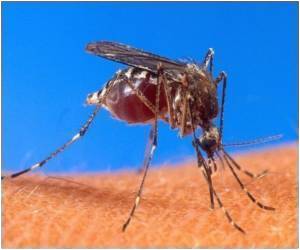Malaria-causing parasites use a new metabolic pathway that helps them to survive inside human blood cells, say scientists.

In most living things, several major chemical processes involved in converting food to energy are linked through a cyclic hub called the tricarboxylic acid cycle, also known as the Krebs cycle.
NIAID grantee Manuel Llinas, of Princeton University, and his colleagues discovered that Plasmodium falciparum, the deadliest malaria parasite, uses a double-branched metabolic pathway instead of the classical loop.
According to Dr. Llinas, this specific branched pathway has not been detected previously in any other organism.
The malaria parasite appears to use one branch primarily to generate the molecule acetyl-CoA, which it needs to thrive within a host organism. This branch may represent particularly vulnerable spots to target with anti-malarial drugs, says Dr. Llinas.
The detailed description of the chemical steps involved in the metabolic pathway of the malaria parasite also could aid future malaria drug development efforts because the pathway sits at the heart of several other biological processes currently being investigated as drug targets.
Advertisement
Source-ANI









